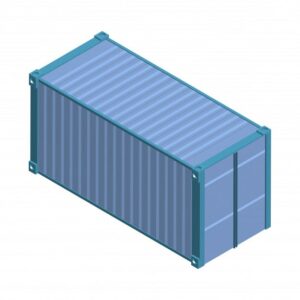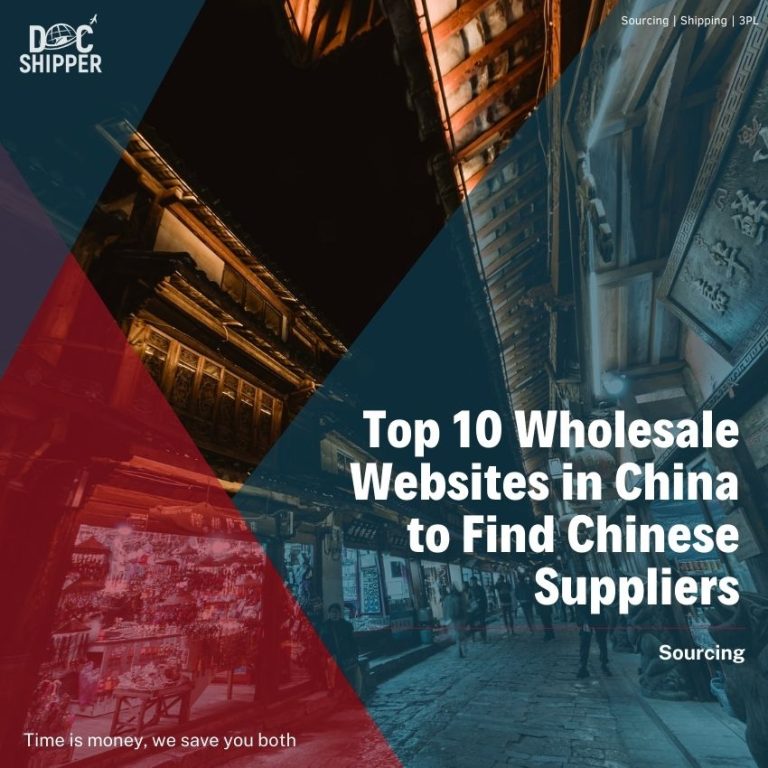If you’ve been looking for information regarding various varieties of quality checks in Asia, you’ve come to the correct place!
We get to meet with a lot of folks in the importing and manufacturing industries because We own and operate a procurement firm. And it always shocks us how many importers fail to use China Product Testing solutions throughout their manufacturing process.
Although We usually suggest that almost all DIY importers get their goods evaluated by a third-party supervisor at least once while the materials are now in production, determining whenever that inspection should occur can be difficult and frustrating.
This guideline will walk you through the five main basic types of checks. We’ll go over it in detail later.
DocShipper info
How Can DocShipper Simplify Imports?
Safely import from China with DocShipper. Benefit from our expertise in logistics, customs, and quality to ensure your importation process goes smoothly!
At what point should you conduct a quality inspection?
When importing goods from China, investing a few hundred dollars in inspections can be a wise decision as it can save you from potential quality problems and product rework, which could cause weeks of delays. However, determining when and how to conduct a full inspection in China can be a challenge.
Fortunately, following certain guidelines can simplify the decision-making process.
In general, there are several types of quality inspection company China available, including Inspection Before Production (PPI), During the Quality Control Check (DUPRO), Checking the Loading of Containers (CLC), and Inspection prior to shipment (PSI).
Inspection before production
 Before the commencement of product inspection in China, it is customary to conduct Pre-Production Inspections (PPI), also referred to as Initial Pre-Production Checks (IPC).
Before the commencement of product inspection in China, it is customary to conduct Pre-Production Inspections (PPI), also referred to as Initial Pre-Production Checks (IPC).
This involves an assessment of components and materials to ensure that they comply with your specifications and meet the necessary standards.
What is the optimal time to perform a Pre-Production Inspection?
Performing a Pre-Production Inspection is crucial as vendors often make unrealistic promises and fail to deliver on critical aspects, leading to adverse effects on price, quality, and lead time.
Typically, it is advisable for buyers to arrange for an inspection agent in China to visit the vendor’s facility to examine the components and systems of their merchandise. This approach can help identify potential quality-related issues early on, thereby avoiding any delays in mass production later.
How does a Pre-Production Inspection benefit you?
A Pre-Production Inspection (PPI) primarily focuses on ensuring that the manufacturing process begins smoothly and stays on track.
It also serves as a trial phase to confirm that sample components and materials meet the required product standards.
- Reduced cost of sample transportation: Travelling to and from China to transport samples can be expensive, and exporting samples may not be cost-effective. Therefore, sending samples to a verification agency for examination and evaluation against the specifications can be an economical solution.
- Testing of all materials and equipment: Factories may use cheaper materials to reduce costs. To prevent this, the sellers can opt for a random selection of samples to be tested in a laboratory.
- Prevention of additional expenses: The use of substandard materials can lead to unexpected changes in design, materials, components, and other manufacturing aspects, resulting in additional expenses. PPIs can help prevent these consequences.
- Adherence to assembly instructions: Buyers may have specific requests for the construction or packaging of their goods. PPIs can help to ensure that the manufacturing process follows the instructions and reduces the chances of having to redo work.
- Incorporation of a detailed SPEC Sheet: Including a detailed Technical Specifications Document along with the samples can enhance the evaluation process (for more information, refer to our other post titled “How To Use A Technical Specifications Document To Enhance Your Quality of Its Products”).
Additional benefits of Pre-Production Inspections include:
- Keeping the production schedule on track.
- Ensuring that fabrics and materials comply with the given instructions.
- Serving as an early warning system during the production process.
Can you explain the downsides of conducting a pre-production inspection?
Pre-production inspection may also have some drawbacks, such as the risk of upsetting suppliers who may be unwilling to stop their production lines.
Additionally, the quality of the initial production batch may not be a reliable indicator of the overall production quality. Furthermore, the production process can sometimes take several weeks, which may result in delays in inspection and further hold-ups in the finalization of the product.
Can you provide tips on how to maximize the benefits of a pre-production inspection?

- Provide a SPEC Sheet: To avoid any confusion or misinterpretation, it’s essential to have a clear and well-organized list of your product requirements, also known as a SPEC Sheet. You can find more information on how to create one in our article “What to do before the order is placed to reduce the risk of quality problems.”
- Plan Ahead to Avoid Mid-Production Changes: It’s crucial to have all your product specifications finalized and communicated to your supplier before production starts. Changes made midway through production can cause delays, additional costs, and quality issues.
- Have a Contingency Plan: Even with the best preparation, issues can still arise during production. Make sure you have a plan in place to address any problems that may occur, and that it’s clearly communicated and understood by your supplier.
- Use a Physical Sample as a Reference: Providing an on-hand physical sample to your inspection agents can ensure that the materials, texture, color, size, weight, and other features of your finished goods match your expectations. This can help prevent any discrepancies and ensure a smoother production process.
How can you describe the concept of DUPRO (During Production Inspection) or inspection in progress?

During Production Inspection (DUPRO) is a quality control process that occurs when a certain percentage of products, typically between 10% and 50%, have been produced and packaged.
Factory inspection in China consists of sending inspectors into the factory to identify any issues occurring during production. Random units are chosen from the production cycle and checked against your product standards to spot faults.
Although production faults and quality problems can cause delays, conducting DUPRO can help identify these issues early and rectify them on-site.
When Should a DUPRO Inspection Be Conducted?
To prevent quality issues from causing delays, it is advisable to assess your products as early as possible in the production process, particularly during the initial stages.
What are the advantages of carrying out a DUPRO inspection?
DUPRO offers various benefits, including Early Corrective Action, serving as an early warning system that helps buyers detect and resolve quality issues before they become apparent and degrade the overall quality of the shipment.
This process also helps maintain the production schedule, prevents unnecessary additional charges, ensures adherence to fabric instructions, and reduces the likelihood of failing Final Random Inspections. DUPRO also helps detect potential delays and allows for corrective action to be taken before production completion.
However, there are some disadvantages to consider, such as the need for inspectors with prior experience.
Since DUPRO is a more hands-on approach, it takes longer and requires experienced agents for a successful examination. Additional fees may also be incurred if defective items require rework, which could result in time and money loss for both the buyer and the factory.
Vendors may also refuse to pay for revised items unless previously agreed upon.
How to Get the Most Out of DUPRO
To conduct a thorough DUPRO inspection, the following aspects should be considered:
- Address rework issues: Your inspection contract should include a clause that clarifies who will bear the financial responsibility for reworking faulty items.
- Choose experienced inspectors: Make sure to inquire about the experience of the inspectors who will be assigned to your product. Ideally, they should have expertise in the specific product you are manufacturing.
DocShipper info
Need Help With Production in Asia?
DocShipper assists you with all the production processes and quality inspections in Asia. Contact our experts for more information.
How is a Container Loading Inspection (CLC) conducted, and what is its purpose?
Once your products have finished production and are prepared for shipping, a container loading inspection, often referred to as a CLC, is conducted. This inspection involves a thorough review of your product specifications, labels, barcodes, and packing materials to confirm that they comply with your requirements before loading into containers for transportation.
What is the appropriate timing for conducting a Container Loading Check (CLC)?
Container Loading Checks (CLCs) are typically conducted at the factory while your items are being loaded into shipping containers. This step involves verifying the quantity and inspecting the packaging, making it a good choice if you have extensive packaging requirements.
What advantages can be gained by conducting a Container Loading Check?
Careful and precise loading of goods is crucial to avoid unsafe situations and potential loss of products during transportation. Container Loading Check (CLC) can ensure proper balance and packing to prevent damage and reduce the risk of shipping malfunctions. Additionally, CLC can be a viable option to address trust issues with the supplier and protect against product substitution concerns.
What are the disadvantages?
During this phase, no adjustments or fixes can be made.
These inspections are often hurried and do not cover a comprehensive inspection of the entire cargo. The inspector may only examine random samples, which might not provide an accurate representation of the overall quality of your goods.
How to get the most out of container load inspection?
- Weather considerations: Postpone CLC during poor weather conditions as dampness can cause damage to the cartons. Schedule CLC outside of the rainy season, or inquire about the possibility of conducting it indoors.
- Schedule the inspection: Collaborate with your supplier and inspection agency to plan a specific time and day to avoid any attempts to hide or alter your items by loading containers before the inspection agent arrives.
- Palletization: Consider palletizing your items for better protection during shipping, especially for fragile items. Check if your supplier can provide this service, or contact a local freight forwarder for assistance in calculating container measurements.
- Conduct inspections during production: Early detection of faults during production allows for repairs or rework before completion, saving time and money in the long run.
How can pre-shipment inspection be defined?
Pre-shipment inspections (PSI), which are also referred to as Final Random Inspections (FRI), are conducted when 100% of the production is completed and 80% of the goods are packaged.
At what stage of the production process should a Pre-Shipment Inspection (PSI) be conducted?

Pre-Shipment Inspections are conducted at the factory before the goods are shipped, allowing for any repairs to be made before shipment and making it harder for the supplier to hide any defective items.
To ensure enough time for potential rework, it is recommended to conduct Pre-Shipment Inspections at least two days prior to the shipment date and to leave at least two weeks between the inspection and the expected shipment date.
What are the advantages of a pre-shipment inspection?

These inspections are important in double-checking that the goods you receive are what your factory promised. Furthermore, PSIs help manage and maintain compliance with product specifications, including aspects such as size, components, assembly, labeling, packaging, and quantity.
Inspection agents typically use an AQL table to determine the appropriate sample size and acceptance number when assessing the quality of your goods for defects. This process involves randomly selecting a specific number of products and calculating the number of defects to assess the overall quality of your goods.
Before your products are shipped, you have one final opportunity to review and make any necessary modifications.
It’s essential to undertake these checks because if you don’t, you won’t know whether your supplier provided the correct goods until your product is at your destination or in the hands of your client, which can be too late to take any corrective action.
To ensure that all requirements are met, it’s recommended to provide a Product Specifications Sheet to your inspection agencies, which can be used as a quality control checklist. This inspection approach is preferred by many importers because it covers multiple aspects of production, allows customers to have a reasonable expectation of the overall quality of the goods, and enables payments and shipments to proceed after passing inspection.
What are the drawbacks of conducting a pre-shipment check?

Additionally, unscrupulous suppliers can replace the inspected products with inferior ones before shipping.
Moreover, failed inspections put suppliers at risk, resulting in the possibility of price re-negotiations and order cancellations. This risk may lead suppliers to engage in unethical practices, such as bribing inspectors for more favorable inspection results.
Another issue is that pre-shipment inspections are often conducted towards the end of an order, and by that time, the order may have already exceeded the deadline, which could result in delays.
How can you optimize pre-shipment verification to achieve the best results?
Buyers typically exert pressure on their vendors to deliver products quickly, which can lead to rushed inspections. To avoid this, it is important to schedule enough time for thorough inspections.
Rushing inspections can have several negative consequences, such as agents having to write non-official reports that lack the necessary details and images. It can also undermine the accuracy of the inspection report by not allowing sufficient time for suppliers to provide adequate responses to questions.
Furthermore, when inspections are conducted just a few hours before the goods are shipped, errors can occur, and quality issues can be challenging to address. It is crucial to prioritize inspection services to prevent costly disasters and bankruptcy.
To ensure the quality of your products, it is highly recommended to conduct inspections without skipping or skimping on inspection services. Inspection services are cost-effective and can help you avoid potential issues. Please contact us to learn how we can assist you in achieving a successful production outcome.
Docshipper Tip
How Can DocShipper Save You Time?
Follow our advise to avoid wasting time and ensure that you choose a good manufacturer; if you don’t know where to begin, contact DocShipper and our specialists will assist you.
FAQ | What are the types of quality inspection in Asia?
Manufacturing inspection is recommended to ensure that products are manufactured according to the required quality standards and specifications. By conducting inspections, manufacturers can identify defects and non-compliances early on in the production process and take corrective actions to prevent further production of defective products. This can help save costs and prevent the shipment of faulty products to customers, which can lead to reputation damage, product recalls, and legal issues.
Inspection and quality control are two related but distinct concepts. Inspection involves a visual examination of the product to detect defects or non-compliances, while quality control refers to a broader set of activities that aim to ensure that products meet the required quality standards throughout the production process. Quality control includes inspection, but also involves monitoring and controlling various aspects of the production process, such as raw material sourcing, process control, and testing.
For importers, the most recommended quality control inspection is usually a pre-shipment inspection (PSI). This type of inspection is conducted after the production is completed, but before the goods are shipped out of the factory. A PSI aims to verify that the products meet the required quality standards, specifications, and other contractual requirements, and to ensure that the goods are properly packed and labeled for shipping.
If a product fails to meet the quality control standards, it may need to be reworked or scrapped, which can result in delays, additional costs, and reduced profits. In some cases, the non-compliance may be severe enough to render the product unusable or unsafe for its intended purpose, which can lead to customer complaints, product recalls, and legal liabilities. Therefore, it is crucial for manufacturers and importers to implement effective quality control systems and conduct regular inspections to minimize the risk of non-compliances and ensure the production of high-quality products.
We help you with the entire sourcing process so don’t hesitate to contact us if you have any questions!
- Having trouble finding the appropriate product? Enjoy our sourcing services, we directly find the right suppliers for you!
- You don’t trust your supplier? Ask our experts to do quality control to guarantee the condition of your goods!
- Do you need help with the logistics? Our international freight department supports you with door to door services!
- You don’t want to handle distribution? Our 3PL department will handle the storage, order fulfillment, and last-mile delivery!




